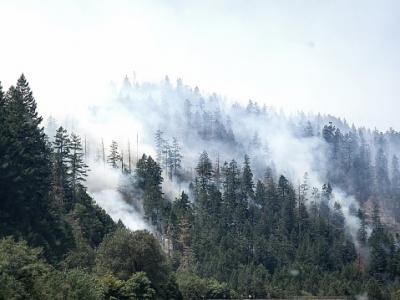Biomass Burning Aerosols in Most Climate Models are Too Absorbing
Biomass burning (BB) aerosols, consisting of a combination of strongly scattering and strongly absorbing species, impact regional and global climate by perturbing the Earth’s energy balance. Earth system and chemical transport models (ESM/CTM) struggle to represent the climate impacts of these particles due in part to challenges in simulating aerosol size, composition, and mixing state. These radiative and microphysical properties vary strongly with different fuel types and burning conditions, and ESM/CTM can benefit from observations of these aerosols that cover a large range in BB sources. This study addresses the model uncertainty in simulating BB optical properties by comparing 9 state-of-the-art ESM/CTM to a variety of regional BB observations conducted around the globe. In addition, this study quantifies the radiative impacts of model improvements to BB aerosol properties in version 1 of the Community Earth System Model (CESM1).
This study presents clear evidence that many ESM/CTM simulate BB aerosols that absorb visible light more strongly than observed wildfire smoke. This has implications for simulated BB climate impacts, which may overestimate the atmospheric warming of BB aerosols. The biggest factor in this overestimation is the treatment of BB aerosol mixing state in the models. A correction in this systematic overestimation in absorption could impact the assessment such as the Intergovernmental Panel on Climate Change (IPCC) and Phase 6 of the Coupled Model Intercomparison Project (CMIP6) by shifting the currently estimated radiative impacts of BB aerosol towards more negative values. Therefore, this study may have an important implication for the future assessment of BB aerosol radiative effects from IPCC.
This work compiles observations of aerosol scattering relative to extinction and carbonaceous aerosol composition from 12 different field campaigns and laboratory measurements of BB smoke. Next, nine state-of-the-art ESM/CTM are compared to these observations. From this comparison, it is found that the majority of these models overestimate BB aerosol light absorption compared to observations. The models that have better agreement tend to have less absorbing BB aerosol, larger aerosol sizes, and externally mixed treatments for the species making up BB aerosols. Sensitivity tests are run with CESM1 to test how these microphysical and radiative properties impact model-observational agreement, resulting in model improvement with all of the previous changes. Of these changes, mixing state has the greatest impact on model performance. This study further quantifies the radiative effect of BB aerosol from the different CESM1 sensitivity experiments and finds that these changes result in BB aerosol that have more of a cooling effect in CESM1 than current BB aerosol treatments. Improvements compared to observations in other ESM/CTM may lead to similar reductions in the BB radiative effects.

